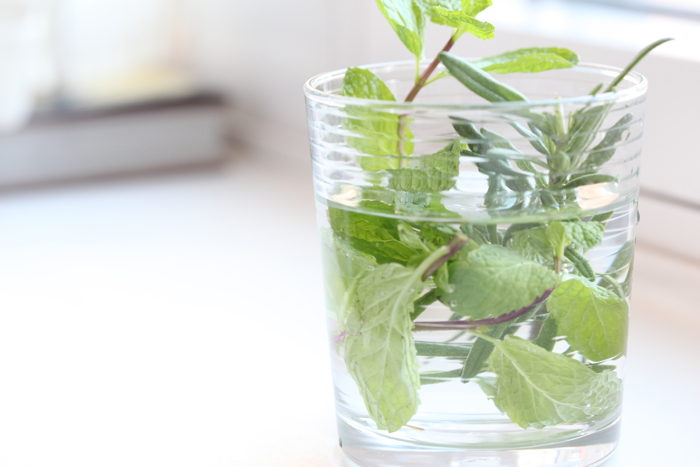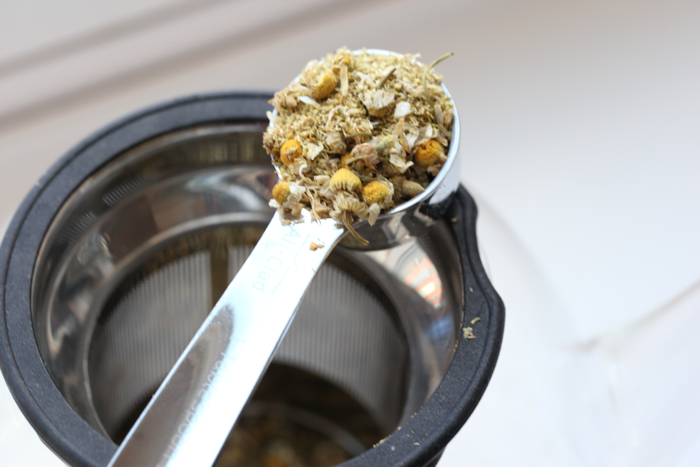Don't like the taste of water? These days, you're certainly not alone. But when it comes to human history, disliking H2O was a risky endeavor. Here's the how and the why.
As history notes, water has been quenching, refreshing and balancing our palate and hydration needs for most of human civilization. That is, until now. For the last several decades, its seems as though water just doesn't "make the cut" for Americans in terms of taste, and when stacked up against hundreds of bottled and store-bought sweetened beverages like Vitamin Water and Sierra Mist, it's treated like a red headed stepchild -- not cool, not sweet, not tart, not tasty. Why drink water when drinks claim they can quench your deepest thirst while making your taste buds sing at the same time?
Well, the reasons are pretty powerful. To start, (1) very few of these drinks actually hydrate or quench thirst in average, everyday circumstances as well as Mother Nature's drink of choice. Secondly, (2) when compared to eating whole foods, the calories from bottled drinks are sub-optimal, actually providing more risks than rewards. Loaded with additives, sugars, and preservatives, most sweetened drinks and juices add tons of empty calories to our daily diet, and put and undue burden on our bodies to deal with the mountains of sugar and unnatural, lab-formulated ingredients. And (3), perhaps most important of all is the fact that these kinds of drinks knock our taste buds out of whack, leaving us continually unsatisfied and craving more. Without a balanced palate, we can't enjoy wholesome, natural foods the way we need to!
But there's a way to kick this habit and start replenishing yourself the natural way! Here I introduce to you, in a 3-Day program, a delicious path to getting back to straight up, all natural, unadulterated water. Here's how it's designed:
Part 1: We reacquaint ourselves with water through a fun history lesson.
Part 2: I'll give you tips for deciphering sweetened beverages and juices.
Part 3: You'll then for a consecutive 3-day period, drink only plain water and/or choose from a list of deliciously fragrant recipes below.
Let's get started!
Part 1 -- H2O and the Dawn of Time
Although we've been drinking water since the dawn of time, we have consumed a few additional beverages throughout human history. However, none of them bare even the slightest resemblance to the drinks of today. Perhaps the most provocative is beer. Created by the ancient Sumerians from barley about 6,000 years ago, beer was the drink of the people, and in ancient Egypt, was used along with bread to pay workers for building pyramids. And when water was scarce or compromised by pollutants, beer (and ale) provided the main source of hydration. Another common drink through history has been wine, consumed by the ancient Egyptians and used as a tool for one-ups-manship among the Greeks and Romans. Then of course, there's tea, perhaps the most popular beverage on earth after water. Legend has it that Chinese Emperor Shen Nong stumbled upon tea in 2737 B.C., when after boiling his water to purify it, (a daily necessary ritual), a tea leaf fell into his cup, infusing the water with a dramatically lovely taste. Drinking tea has been so integrated with the economic growth of the world, it was said that the Industrial Revolution was fueled by tea.
So what does all this history tell us? We really don't need anything but water (plain, boiled, or infused) when it comes to quenching our thirst, nor have required much from drinks in terms of nourishment (with of course the exception of beer), getting most of it from food. When people wanted a sweeter drink, honey, lemons, dates were added to water (a la ancient Arabia), but at the end of the day, we've survived thousands of years without sweetened peach iced tea, Gatorade and fruit punch cocktails. Coca-cola wasn't around until 1886, and orange juice was an unknown quantity until the 20th century!
Part 2: Tips For Deciphering Sweetened Beverages and Juices
Today, water's competition looks comically complex, with lines and lines of ingredients on their labels. Here's how what you'll likely come across in both categories:
Sweetened Beverages: Carbonated water (soda water, sparkling water) which is made by passing pressurized carbon dioxide through water, is by itself, an effective source of hydration, but the additional ingredients on its label look like they're best suited for outer space: high fructose corn syrup, caramel color, phosphoric acid, natural flavors. I don't know about you, but drinking artificial colorings and phosphoric acid don't seems as naturally refreshing as clean, crisp, filtered H20. And the meaning behind "natural flavors"? No one really knows -- that's a trade secret! And with all caffeine added to sodas, the hydration you'd get from the carbonated water is actually highly compromised. Sweetened tea drinks contain even more ingredients (from a well know tea brand): organic cane sugar, organic white grape fruit concentrate, organic orange juice concentrate, orange flavor, natural mango flavor, ascorbic acid and mixed carotene (vitamin A). Although companies are using the word "organic" in front of a sugar, refined sugar is a refined sugar nonetheless. And what to make of ascorbic acid that's listed in so many drinks? The main reason is to prevent the loss of color and flavor while also allowing the manufacturer to claim more vitamin C content.
100 percent Juices, Juice Cocktails and Juice Drinks: Of course there are tons of additives in sodas, but juices can't be unhealthy, right? Not so fast. Firstly, finding "pure juice" is like finding needle in a haystack! According to the FDA, beverages that aren't composed of 100 percent juice, must be referred to as juice drinks or juice cocktails. Nantucket Nectars Juice Cocktails isn't a juice, because although it technically contains juice, it also has added sugars, preservatives and/or colorants. Now, say that you do find 100 percent juice on your grocery store shelves. This doesn't mean you're drinking something fresh and pure. Almost all bottled and refrigerated 100 percent juices in cartons, are made from juice "concentrates," which often involves both adding and subtracting certain chemicals and fruit byproducts in order to provide a more condensed version of natural fruit juice. They're also pasteurized which minimizes their nutritional value, but allows them to last for months -- nowhere near fresh! These manufactured juices can't compare to the taste and nutritional bang for your buck you get with eating fiber-rich whole fruit!
Summing it up, here's new and better way to think about sweetened beverages and commercial juices:
•They don't hydrate you better than water, and don't nourish you better than whole foods.
•They provide unhealthy calories, empty calories, and way too many calories, making you susceptible to overweight, obesity and chronic disease.
•They alter and desensitize your taste buds and cravings, preventing you from finding the deliciousness in wholesome and natural foods.
Part 3: 72 Hours of Deliciously Refreshing H2O
So here's how to get back to quenching your thirst with water, balancing your palate and putting yourself on the path to getting healthy calories from food instead of drinking unhealthy ones! These delicious recipes are meant to be incredibly basic in order to simplify your ability to implement them in your diet and throughout your life, even after the three days are over.
Rules of Engagement:
1. Even if you can get your hands on some freshly squeezed fruit juice, don't drink it over these three days as the natural sweetness (from fructose) will get in the way of your palate trying to adjust to the taste of water.
2. If you really need caffeine, and normally get it from bottled sodas or drinks, over these three days, try getting in its most pure form -- either from a high quality shot of espresso or a high quality cup of black (from the best beans you can get your hands on), or you can try a cup of green or black tea with lemon and a small amount of honey. My personal favorite is oolong and you can find some great tasting, super high quality and easy to brew loose leaf teas from Rishi Tea.
3. You of course don't have to stick to these recipes perfectly. You can add natural flavorings of your choice. Some great options for sparkling water, tea, and plain water are fresh thyme, spices like cinnamon sticks, cardamom, and ginger, different berries such as blueberries, and of course lemons!
4. If you don't have time to make these drinks or bring them to work, there are a few great bottled brands I do recommend for this program. Ayala's Herbal Water and Ito En's unsweetened bottled teas (Jasmine, Rose, Green) are some good alternatives.

Recipe #1: Fragrant Rosemary and Mint Infused Water
Ingredients:
2 sprigs fresh mint (about 5 to 6 leaves on each stem)
½ stem fresh rosemary (about 4 inches long)
8 to 12 ounces of cold filtered water
Procedure:
1. Simply place all ingredients in a tall glass and let herbs infuse for five minutes. Drink with stems remaining infused for a fragrant whiff with each sip!

Recipe #2: Iced Raspberry and Lime Spritzer
Ingredients:
5 fresh raspberries
Handful of ice cubes
2 teaspoons lime juice
8 ounces Italian sparkling mineral water
2 teaspoons maple syrup (optional)
Procedure:
1. Place fruit in a tall glass and crush using a wooden spoon. Add lime juice, ice and water. Stir in maple syrup if desired. Sip and enjoy!

Recipe #3: Chamomile, Mint and Honey Hot Tea
Ingredients:
2 tablespoons whole flower, loose leaf chamomile tea (I use Rishi Tea brand)
2 cups water, brought to a boil
2 sprigs fresh mint
2 teaspoons honey
Procedure:
1. Using a tea pot with an infuser or similar, place loose tea into infuser. Pour water through and let steep for five minutes. Pour into teacup, add mint, honey and enjoy!
Results
After tasting water in these beautiful, more flavorful ways over a 72-hour period, your taste buds will react differently to a sip from a Coke can or even from a gulp of orange juice -- which will register as much sweeter than it did previously. At this point, you want to take the amount you consume of these beverages down considerably, if not completely. You'll start to value the taste of water and look forward to using in the quench thirst, not your appetite!
Pooja Mottl, a Wall Street banker turned Whole Food Chef and Healthy Eating Advisor, focuses on sustainable, whole-foods based cuisine. She is a graduate of the Natural Gourmet Institute for Health and Culinary Arts. You can find all her latest recipes, simple food and fitness tips, and "3-Day Resets" for a healthier life at Pooja's Way and on Facebook.
Recipes by Pooja Mottl © 2011 Pooja Mottl. All rights reserved.
Photo credit: Pooja Mottl